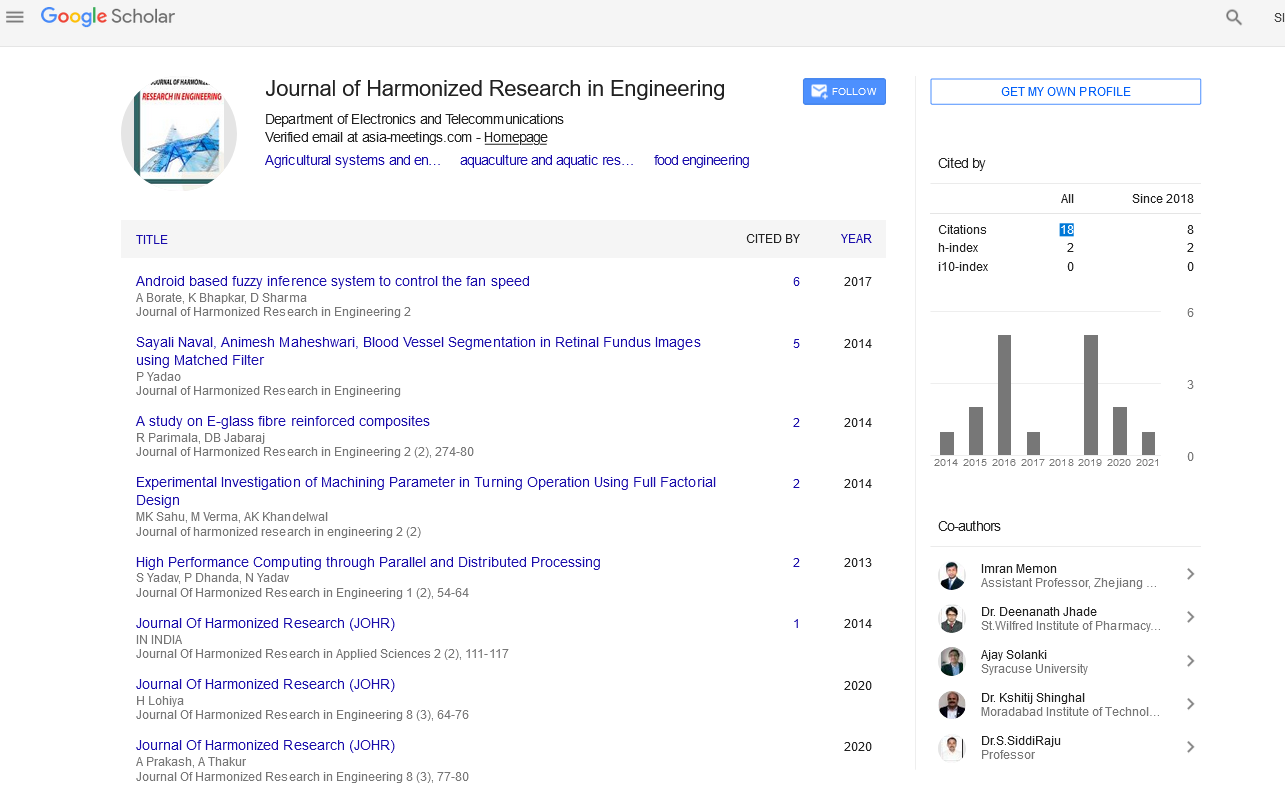Perspective - (2022) Volume 10, Issue 3
REMOTE SENSING AND ARTIFICIAL INTELLIGENCE HAVE THE POTENTIAL TO IMPROVE THE RESILIENCE OF AGRICULTURAL PRODUCTION SYSTEMS
Faria Ghosh*Received: Sep 01, 2022, Manuscript No. JHRE-22- 77554; Editor assigned: Sep 05, 2022, Pre QC No. JHRE-22- 77554 (PQ); Reviewed: Sep 19, 2022, QC No. JHRE-22- 77554; Revised: Sep 27, 2022, Manuscript No. JHRE-22- 77554 (R); Published: Oct 05, 2022, DOI: 10.30876/2347-7393.22.10.206
Description
The availability of land, water, and more lately, a pandemic, are all putting growing pressure on modern agriculture and food production systems. The economic and environmental viability of the present and future food supply systems are being threatened by these factors. More than ever, scientific and technical advancements are required to ensure there is enough food for a rapidly expanding worldwide population. From the cellular to the field level, scientific advancements have improved their comprehension of how various agricultural system components interact with one another. Although genetic technologies have made great strides in recent years, their capacity to precisely and broadly monitor crop condition in the field has lagged far behind.
This study focuses on using remote sensing and artificial intelligence to increase the resilience of agricultural systems, and it will provide a rare chance for the creation of the prescriptive tools required to meet the issues of agriculture and human nutrition in the coming decade. Globally, agriculture production systems face formidable obstacles, such as climate change, a decreasing water supply for irrigation, rising production costs, and a general decline in the number of farm workers during the previous few decades. In addition, the COVID-19 pandemic, the most recent problem, poses a threat to the global supply and production of food. These elements put existing and future food supply systems’ potential to be economically and environmentally sustainable at risk.
Even though agriculture is always changing, substantial improvements will be required to keep up with on-going climate change. How to sustainably produce enough high-quality food for the rapidly expanding global population is the obvious topic at hand. Modern technology has always been used by agricultural research experts as they look for new methods to incorporate them into agricultural systems. With the help of dynamic crop simulation models, they have been able to integrate various agriculture system components and investigate how they work together as a whole. Because of its ability to utilise massive data, which is now more readily accessible thanks to the deployment of Unmanned Aircraft Systems (UAS), Artificial Intelligence (AI) is already garnering a lot of attention within the agriculture disciplines.
By enabling advanced analytics for managing agricultural systems, UAS offers an unmatched chance to increase production systems’ resilience and efficiency. They examine recent studies on the application of remote sensing technologies to sustainable agriculture in this study. They also explore future prospects on the integration of UAS technology with space-borne remote sensing data for national and international scale research, as well as present obstacles to the adoption of UAS technologies. Individual physical sensor deployment is frequently expensive and time- consuming. It might be difficult to keep them on the field because they regularly get in the way of activities like tillage, planting, spraying, and harvesting.
By responding to soil physical and chemical characteristics, moisture availability, biotic and abiotic elements, as well as management techniques, plants combine genetics and their surrounding surroundings. In this sense, plants can act as biological field probes that can be examined by sensors aboard a UAS. Due to their small sample sizes and inherent subjectivity, traditional techniques of gathering crop data frequently miss in-field differences. To achieve this, UAS fitted with the proper sensors can quickly, accurately, and economically measure the time course of plant growth. These relatively inexpensive technologies also make it possible to capture high temporal and fine spatial resolution data, which was previously impossible with traditional airborne and space borne remote sensing platforms.
Unmanned Vehicle (UV) research published recently shows a sharp increase in interest in the field. Most significantly, scientists have originally concentrated on enhancing the calibration of data products and geo referencing accuracy. Researchers have also looked into the use of UAS data to evaluate plant phenotypic characteristics at the field level because of the possible high-throughput advantages. Researchers have also utilised UAS to monitor agricultural disease, map weeds, quantify biomass, and predict water stress. Others have also shown that they can estimate agricultural factors including canopy height, canopy cover, and vegetation indices using high temporal resolution data, choose genotypes, and predict crop yield.

Google Scholar citation report
Citations : 43
Journal of Harmonized Research in Engineering received 43 citations as per google scholar report









